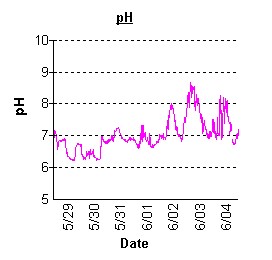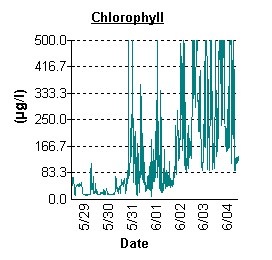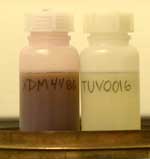|
June 6, 2003
Algal Bloom of non-toxic Gyrodinium uncatenum causing deep-brown water color in St. Martin River. |
|
A water sample was collected by the Maryland Department of Natural Resources at the upper St. Martin River continuous monitoring site during routine water quality monitoring on 6/5/2003. The non-toxic dinoflagellate Gyrodinium uncatenum was found blooming at 118,000 cells/ml giving the water a dark chocolate brown appearance. We have a picture of two water samples from the Coastal Bays comparing the water color of the bloom (left) with a sample from a non-bloom location on Turville Creek (right). Evidence of the bloom
and its effects on water quality can be seen with
Comparison
of a sample of the dark brown algal-bloom waters from the Upper St. Martin
River (Station XDM4486) versus non-bloom water of Turville Creek (Station
TUV0016) on June 5, 2003. The concentration in the bloom sample was 118,000
cells/ml of the non-toxic dinoflagellate Gyrodinium uncatenum.
|




